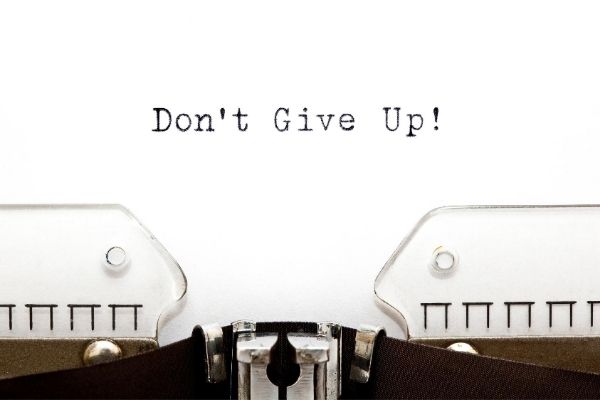If I asked you, “How’s Your Grit These Days”, what would you say? When I use the word Grit, I am referring to your resilience and perseverance to withstand hardship and failure in business (and life).
Some feel they don’t have grit. Some compare themselves to others who seem naturally gritty and wish they could be the same. But I encourage all of us to think of grit in a different way.
Instead of thinking that it comes to some people easily, while others have to work for it, think of it as a plant in a garden. Plants start out as a seed, and with the right conditions, tools and guidance, they grow and flourish.
Your grit is there. If you haven’t experienced it yet, maybe you had the right conditions, but were missing tools and guidance. Maybe you have tools and guidance, but just haven’t experienced the right conditions yet. In this blog post, we’ll explore ways to help your grit grow into a plant that shades and protects you through the storms of life.
An Illustration of Grit – the Standing Man
If you’ve seen the movie Bridge of Spies, you may remember a scene where one of the characters describes someone he calls “Standing Man.” It’s a man who simply stood, and every time he was hit, he fell and then stood back up again. Because he kept standing back up, he was eventually left standing.
It’s a simple image, but a powerful one. It’s a simple action, but a crucial one.
In her book Grit: The Power of Passion and Perseverance, Angela Duckworth says,
“I won’t just have a job; I’ll have a calling. I’ll challenge myself every day. When I get knocked down, I’ll get back up. I may not be the smartest person in the room, but I’ll strive to be the grittiest.”
How to Develop GRIT in Your Freelance Business
To help your grit grow, let’s unpack a series of images from the “Standing Man” description. Each image relates to different phases you may experience in your freelance business and how to develop grit when you need it most.
So, close your eyes for a moment and imagine a lone figure standing. Now, open your eyes again, and let’s explore what this person is doing.
1. Standing
The act of standing might look passive, but it isn’t. In dance and sport, it’s often called a “ready position.” This position involves activating certain muscle groups and adopting a certain posture. The goal is to be ready for action and minimize injury in the event of a collision or a fall.
In this position, people are watchful. They’re observing the environment around them so they’re ready to react in a positive, strategic way. They’ve trained for this moment and are determined to win.
In a business sense, your “ready position” can involve the following elements:
• Continuously training and updating skills in your niche
• Keeping tabs on trends and developments in your industry by reading articles, listening to podcasts, following experts and influencers
• Managing your finances and setting aside savings if possible
• Continuously marketing your services in case you lose a client
• Surrounding yourself with a community of like-minded people to cheer you on in good times and bad
• Finding wise mentors and advisors who can challenge you and keep you accountable in good times and bad.
2. Being Hit
This is the time when you need to know how to develop grit. Out of nowhere, you’re knocked down. Maybe you saw it coming, or maybe you didn’t. One day, your business was running smoothly, and the next day, something fell to pieces.
Maybe you lost a key client. Maybe your dreams were dashed by an unexpected health issue. Maybe the economic impact of the COVID-19 pandemic has reduced demand for your services. Challenges like these can arrive at any time. But the ready position we discussed above can prepare you for times like these, and your outlook on the situation can also help.
In a previous FreeU blog post titled “How to Handle Failure and Success in Your Business,” we share a quote from Winston Churchill that includes the line, “Failure is not fatal.” It’s important to remember this whenever you’re being hit with adversity in your business or life, because sometimes being hit leads to…
3. Falling
Like Standing Man, we are sometimes brought to our knees. We can’t dodge the hit, and we fall. Our freelance or virtual assistant businesses take a beating. Our emotions suffer in a way that makes it hard for us to continue.
The preparation we developed in our “ready position” helps us here. Our previous training and financial management can ensure we fall in a way that won’t hurt as much. Our knowledge of the industry and current events can provide context so we understand we’re not alone. And our community, skills, and knowledge can help us survive the fall.
In his article, “Steps to developing creative resilience,” Chuck Leddy shares the following advice:
“To be resilient, you need to first accept the messiness of life and the creative process. You can sometimes take one step back yet rebound by taking two (or more) steps forward. The key here is acceptance and being open to learning about yourself along the way. The creative life is iterative. Don’t assume you have all the answers, but instead reach out for help from friends, books, and from medical professionals, when needed.”
Reaching out for help from your professional community and support network makes it possible for you to figuratively grasp their hands so you’re ready for the next action.
4. Standing Up Again
Winston Churchill said, “Success is not final, failure is not fatal. It is the courage to continue that counts.” And when you stand up again after getting knocked down, you’re learning how to develop grit. It’s okay that you fell. That part is not the end of your story. You can dust yourself off and keep moving forward.
In an article titled “20 characteristics of successful entrepreneurs,” Tracy Ring says, “a scientific study found that three main factors of resilience can predict entrepreneurial success: hardiness, resourcefulness, and optimism.”
Those are some of the ingredients of grit. Sometimes you don’t realize you have them until you need them. And developing them relates again to your “ready position” from the first part of this illustration. As you get back to your feet and begin standing again, observe your surroundings, look deep inside yourself, and decide what you need to do:
• Take more training to update your skills?
• Pivot your business by expanding or changing your niche?
• Broaden your support network?
• Adjust your financial management?
• Seek more advice and guidance?
In our Freelance University Facebook Community, students and mentors are committed to supporting each other. We’re there to catch each other when we fall and navigate challenges together. In that nurturing environment, we’ve seen many freelancers and virtual assistants find the courage to get back to their feet and carry on. As you get back on your feet, make sure you have people around to steady you.
Final Thoughts
We hope this blog post has inspired you with practical ways you can gain resilience in your freelance or virtual assistant business. Think back to the garden image, and if you feel your grit hasn’t sprouted, give it the nourishment and care it needs.
As Angela Duckworth says in her TED Talk,
“Grit is passion and perseverance for very long-term goals. Grit is having stamina. Grit is sticking with your future, day in, day out, not just for the week, not just for the month, but for years, and working really hard to make that future a reality. Grit is living life like it’s a marathon, not a sprint.”
Let’s run that marathon, and let’s help each other when we fall. How do you gain resilience when you face adversity? Please share your thoughts in the comments below.






